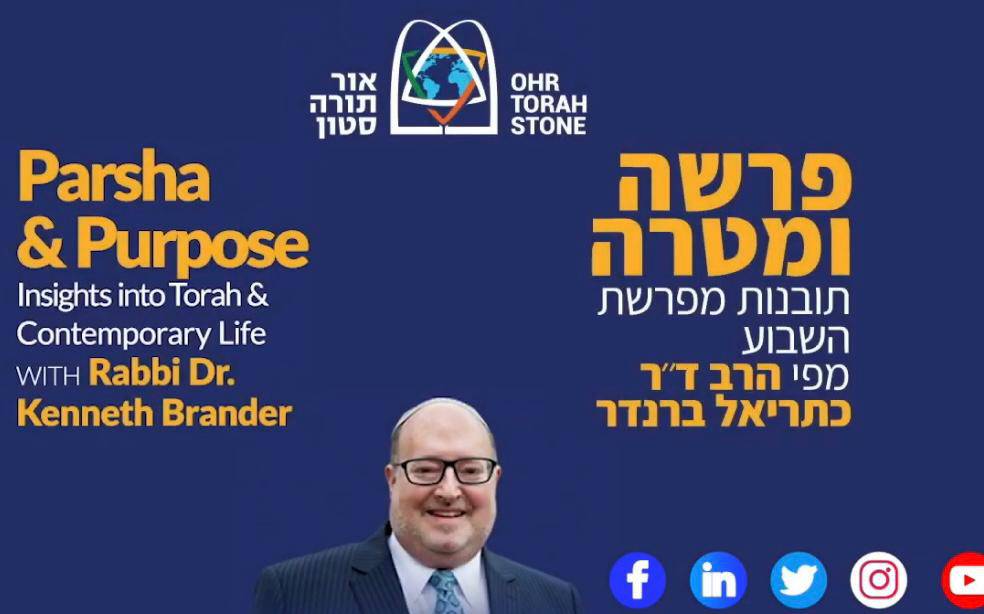One of the most precious and prominent institutions in the Jewish community is under attack during COVID: the synagogue.
Now, I am confident about the eternality of the synagogue, and I thank all the Rabbis and the Rebbetzins and the lay leaders who are doing so much to guarantee and ensure the survival of the synagogue during this pandemic.
But perhaps one of the key messages that is necessary in order to make sure that we guarantee the eternality of the synagogue is found in this week’s Torah portion.
God tells Moshe and the Jewish people: “ועשו לי מקדש”, ‘create for me a Tabernacle; create for me a Temple’, “ושכנתי בתוכם”, ‘that I may dwell therein.’ [Exodus 25:8]
Initially it was the Tabernacle, then the First Temple, then the Second Temple; and then it developed into smaller “temples” known as synagogues.
As the Talmud states, based on the statement in Ezekiel 11:16, “miniature tabernacles”, “miniature temples”. [Talmud, Megillah 29a; see also Rashi to Ezekiel 11:16]
In fact that, we’re told that with the first exile from Israel, they took shards of stones from the Temple, and they used it as basically the cornerstones of all the synagogues that they built. [Iggeret (Epistle) of Rav Sherira Gaon, Siman 83]
The fact that when we build our synagogues they face towards the Temple [Talmud, Berakhot 30a], highlights the idea that our synagogues are the spiritual progeny of the Temple and of the Tabernacle.
But the Temple was not just a place of prayer, not just the place of sacrifice. The Temple had multiple portals of entry through which one could communicate with God:
The Temple was in charge of the hospitality needs of all of those who came to Jerusalem. [Talmud, Yoma 12a]
The Temple was in charge of issues of social justice by having three courts in its plaza. [Maimonides, Laws of The Sanhedrin 3:1; Maimonides, Laws of The Sanhedrin 1:3]
The Temple was a place that dealt with the ecological challenges of the time, by the way it packaged the offerings, the remnants of the offerings, of the sacrifices, and the fact that it used the blood of the sacrifices to fertilize the Kidron Valley. [Mishnah, Middot 3:2]
The Temple was a place that was in charge of the administration of higher education for adults, and proper education of the Oral Tradition and the Written Tradition for children [Tosefta, Sanhedrin 2:2; Talmud, Pesachim 26a; Jerusalem Talmud, Megillah 3:1].
Essentially, the Temple was the central address for the needs of the Jewish people to find a connection to God.
Synagogues that understand that prayer is only one aspect of their mission;
Synagogues that understand that part of our mission as a synagogue – which does not mean place a prayer – it means a place of gathering, a central address, beit knesset, a place in which we deal with all different issues;
Synagogues that, during COVID, make sure that they extend themselves to people who are lonely; make sure they extend themselves to youth searching for some spiritual connection, for families searching for some spiritual identity; synagogues that find a way to deal with all the different challenges and convene resources for their congregants; are synagogues that understand their mandate to provide multiple portals of spiritual entry, multiple ways for youth, adults and seniors to connect.
And I have seen that synagogues that understand that it’s not just the place of prayer, but a place that can reach out, and be a Heaven and a haven for those around them, those synagogues continue to grow, even though their attendance at prayer service may be more limited.
Please God, we will understand and leave this COVID pandemic stronger when we understand that the message of a synagogue is to be the spiritual progeny of the Temple, ways in which we find to help each individual connect and have a romantic rendezvous with HaKadosh Baruch Hu.
Shabbat Shalom.
POST-SCRIPT: ‘THEODOTUS INSCRIPTION”
– First Century B.C.E., Jerusalem, discovered at the Ophel (Southern Wall Excavations)
– Earliest archeological attestation for the existence of a synagogue in the Land of Israel
– Greek dedicatory inscription below, which articulates the ‘mission statement’ of the synagogue:
“Theodotus, son of Vettanos, a priest and a leader of the synagogue, son of a leader of a synagogue, grandson of a leader of the synagogue, built the synagogue for the reading of Torah and for teaching the commandments; furthermore, the hostel, the rooms and the water installation for lodging needy strangers. Its foundation stone was laid by his ancestors, the elders, and Simonides.”




